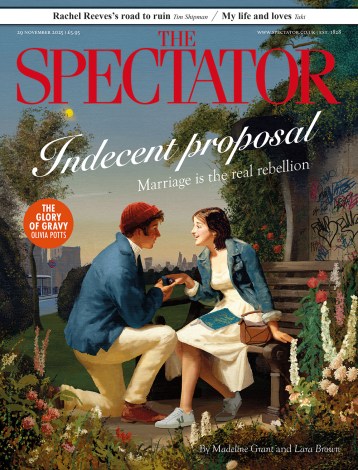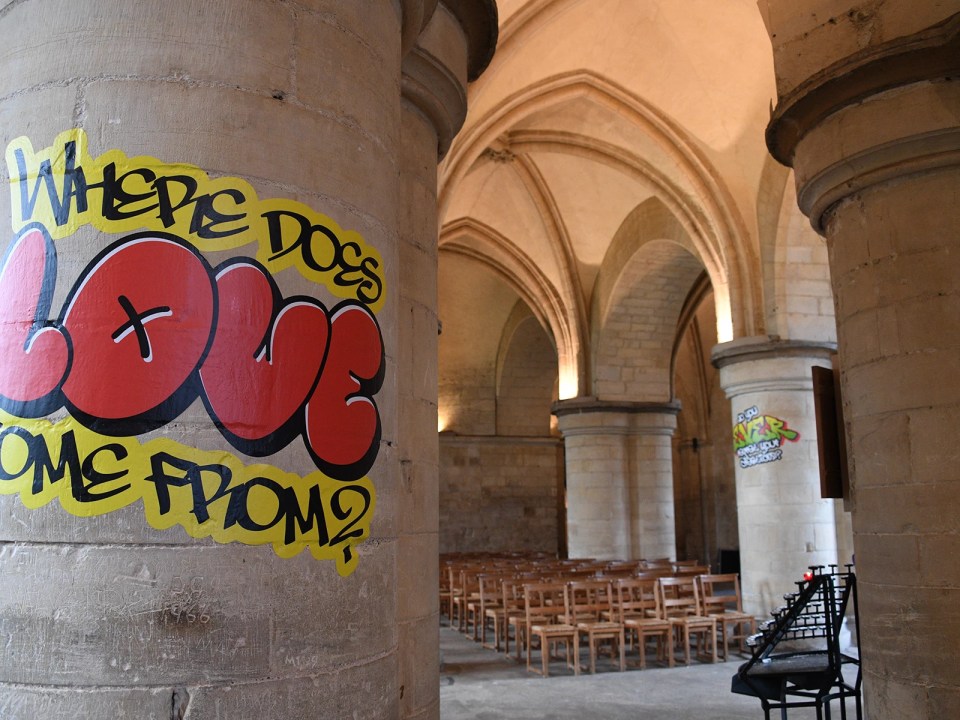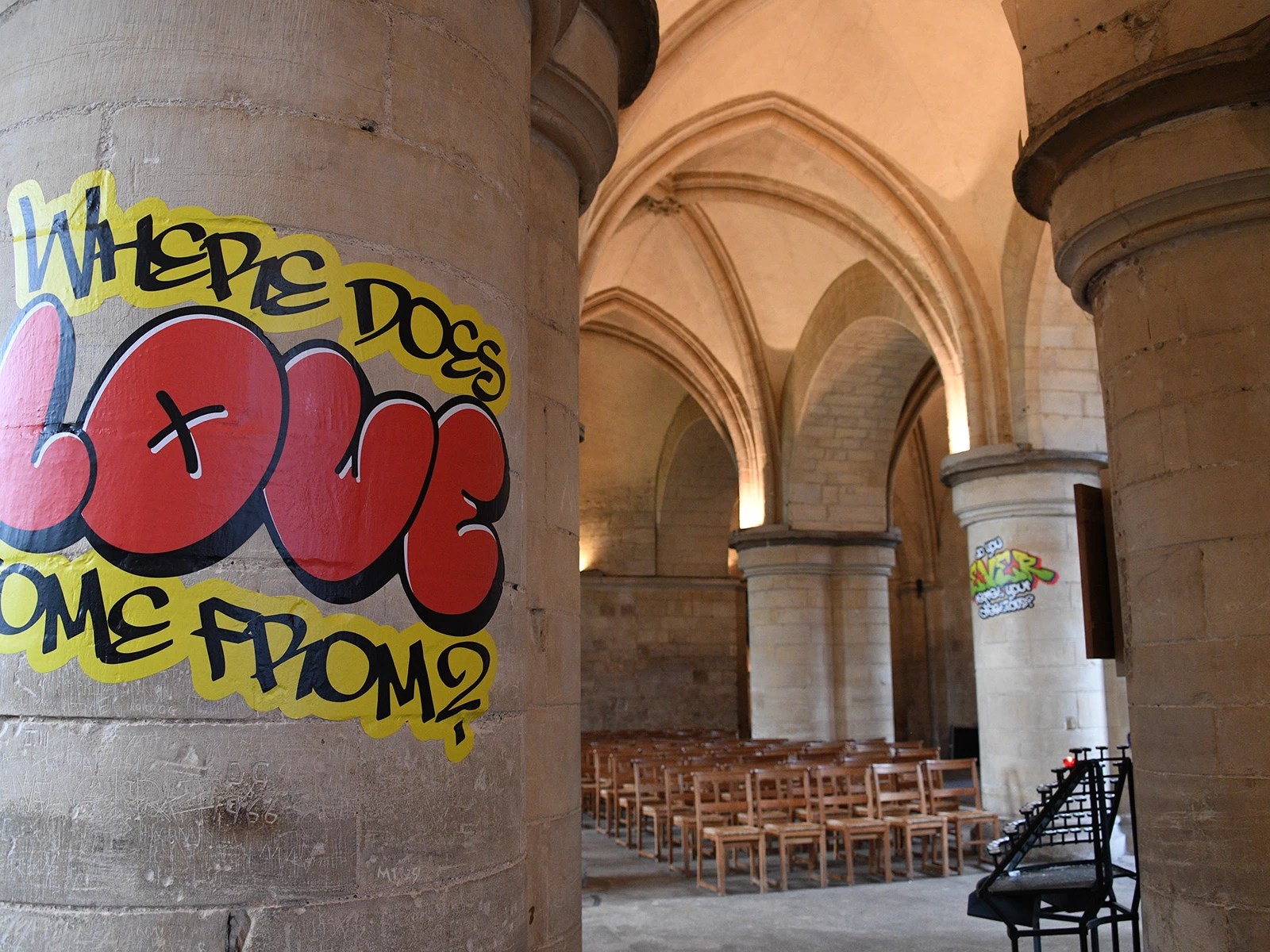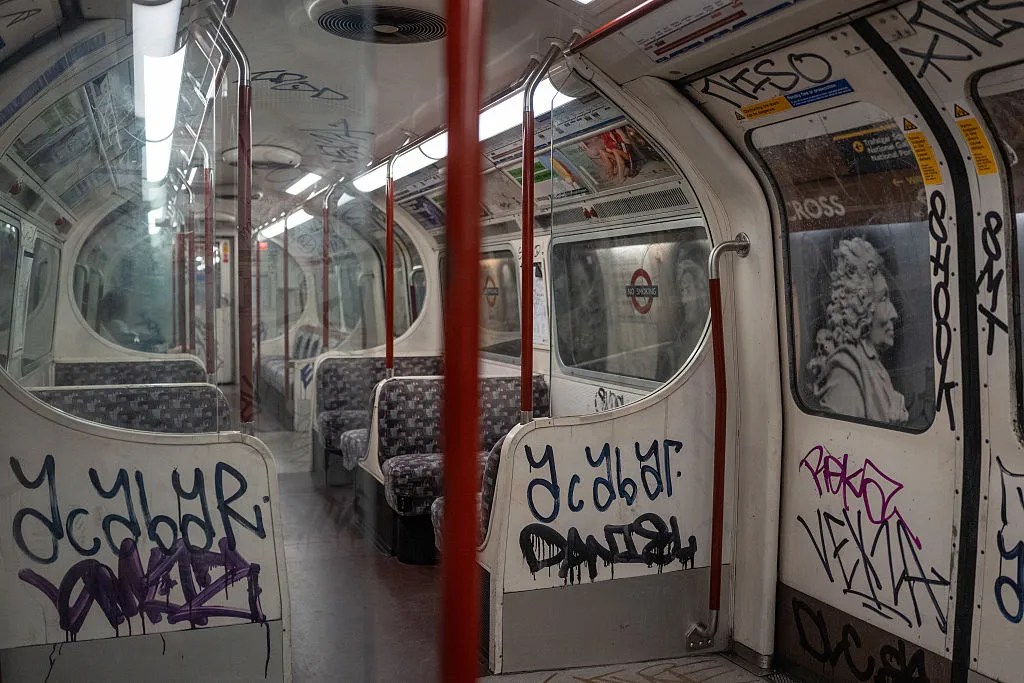Canterbury Cathedral’s ‘Hear Us’ ‘art installation’, in which the heart of English Christianity has been covered in fake graffiti, has caused outcry and anger. The exhibition, which according to the Cathedral involved ‘collaboration with marginalised communities’ covered much of the building’s interior with stickers which they say have been ‘expertly and sensitively affixed to the Cathedral’s stone pillars, walls and floors’. The stickers ask questions such as ‘Are you there?’, ‘Why did you create hate when love is by far more powerful?’, ‘God, what happens when we die?’ and ‘Does everything have a soul?’
The questions posed are unexceptional and often the wording itself slips into the language of a business email or one of those dreary LinkedIn posts
The response has been overwhelmingly negative, with even the US Vice President, J.D. Vance, tweeting that ‘it is weird to me that these people don’t see the irony of honouring “marginalized communities” by making a beautiful historical building really ugly’. While the Cathedral claims on its website that ‘many have reported their ‘delight and intrigue’, the only people it presents to support that claim are Alex Vellis, the artist behind the installation, Jacquiline Creswell, the curator and David Monteith, the Dean of Canterbury who organised silent discos at the Cathedral last year.
What to make of the ‘installation’ itself? It’s very dull. The style of the fake graffiti is dated, ‘bubble style’, reminiscent of 1980s hip-hop culture. It’s something I could imagine the BBC’s Blue Peter showcasing years late in a 1993 episode. The questions posed are unexceptional and often the wording itself slips into the language of a business email or one of those dreary LinkedIn posts – ‘What is the architecture of heaven?’ is a particularly dull example.
Similarly the curator, Creswell, has said ‘surely we have all wondered about the mysteries of the universe, the meaning of life, or in times of uncertainty, sought advice?’ This is an observation so cliched and unremarkable as to be rendered meaningless. What’s missing is any sense of Christianity’s transgressive, world-shattering answer to these questions. Indeed, Creswell seems afraid of even naming God, or Christ, instead describing, in yet more leaden business English, how ‘individuals’ may find themselves ‘reaching out to the Divine with personal inquiries’.
Fergus Butler-Gallie, the Anglican clergyman and Spectator contributor, has described the work as ‘smug, unchallenging and safe’, particularly given it has been done in a space full of genuinely transgression, not least the martyring of Thomas Becket at the altar, and the ‘miracle glass’ which ‘features castration, nosebleeds, and annoying women badgering saints. It’s ribald and stunning and has ordinary people at its centre.’
Good ‘transgressive’ art in sacred spaces is possible. Tim Howles, an Anglican priest and theology research fellow at the University of Oxford, wrote about Tracey Emin’s ‘For You’, describing it as a work which ‘uses the human language of love’ to approach the vastness of love for God. Unfortunately this installation at Canterbury is not good.
There’s also a heavy air of falsity about ‘Hear Us’. The graffiti isn’t even real. Someone – Vellis presumably, along with those ‘marginalised’ folk who it seems are unworthy of being named – designed these stickers and then placed them around the building.
There are also hints of hidden intent. On Canterbury’s website Vellis is quoted speaking in the approved managerial language of official art, saying ‘this project, at its core, is about community, using your voice and change. Language is the people who speak it, and graffiti is the language of the unheard’. Meanwhile over the weekend on his Instagram account he posted a story saying ‘new bio: my work has been described as “sacrilegious & blasphemous”’. This rather gives the game away.
As dull as ‘Hear Us’ is, the response of many online which can be best summarised as ‘why do you care?’. Their cheerleader is David Aaronovitch, journalist and BBC radio presenter. He suggested that ‘the graffiti exhibition in Canterbury cathedral is temporary and…the graffiti will be removed when it’s over. Not that you could possibly know this from the hundreds of posts from the permanently outraged’.
Often we hear this question. ‘Why do you care’about the violation of your sacred space, the home of English Christianity these past 1,400 years? Why do you care that something beautiful has been made ugly? Why do you care that we’re trying to provoke you?
For of course, the provocation is deliberate. As is the suggestion that there’s something excessive about caring. Caring is a necessary precursor to action. If we don’t care for a cathedral, a faith, a city, a land or a nation then we will never take the action necessary to protect them or to save them from those who would desecrate. To care is to act.








Comments